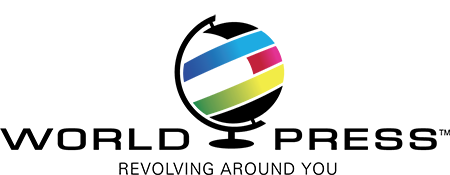How a Content Library Strategy Sets Businesses Apart
Imagine your business had a resource that allowed your company to land significant clients with little or no direct sales efforts. This resource would also actively generate brand awareness, capture leads, and consistently grow your organization by helping to close deals.
What is this resource, you say?
This robust sales and marketing resource is…
A branded, informative, and comprehensive Content Library.
Yep, a content library.
A content library is something you’ve heard of (or have), but have not heard contextualized this way (probably). A rich content library of blog articles (with connected landing pages) provides you with a foundation to systematically grow your business like compound interest grows your retirement savings. And, it slowly transitions your reliance on paid forms of promotion towards organic and owned alternatives (like email and push notifications).
What Is A Branded, Informative, & Comprehensive Content Library?
- Branded: What makes your content different than the next company who wrote something similar? Your brand. In a noisy world of growing, you need an extensive content library with your brand’s personality, voice, and stories. Neutral, researched content won’t cut it, and your content must be implemented by rich media imagery and videos extending the digital footprint of your brand.
- Informative: What value are you delivering to your ideal buyer? Content should be cultivated and shaped with them in mind. Share insights that help your ideal buyer overcome their challenges while also steering them towards your organization. Leverage your experiences and knowledge with your content and also allow the library creation to be a catalyst to extend your expertise further.
- Comprehensive: Your digital library must go deep and wide across the topics relevant to your target audience (while also intersecting with the passion of your organization). While quality and depth matters, an extensive digital library effectively attract people through search, social, email, and individual shares. Cover all your topical bases and cluster your content around those topics (as a turbo charge to your results).
How to Audit & Use An Existing Content Library
If you already have a content library collecting dust, or not performing as it should, execute an action-oriented strategy designed to get your content library to the “promised land” while also producing results along the way. Early efforts will justify and fund future ones.
Let’s explore a five-phase strategy to audit what you have and improve how your content is used.
- Low Hanging Fruit: What low-effort high-impact actions can we take to increase the content traffic, conversions, and reconversions? The goal is quick wins to begin building the momentum required to sustain some of the following more lengthy efforts.
- Simplify Everything: Since we’re going to make every piece of content amazing in the next stage, we need to make sure we narrow down our content to only what is worthwhile. We will remove and consolidate content, but don’t worry; this focused pruning process usually results in a search engine traffic boost and easier access by your visitors. Through this process, we’ll also organize the content into topical buckets, providing better visibility of our library.
- Make What’s Left Better: The mission now is to take all the content that’s survived the shearing process and enrich it. For readability, user attention span, and SEO, 1,200-word content is ideal. Going longer with content will have even strong SEO and social sharing benefits. This stage does not just include the written content, but also the rich media like images, calls-to-action, lead magnets, infographics, and videos. Mentally imagine what a page would look like if it proved to be so comprehensive that a user would not have to go elsewhere to learn more about the topic. That’s what we want.
- Identify & Fill In The Gaps: By getting a handle on our content library, simplifying it, and making what survived awesome, we’ll recognize through the process, topical, and specific content gaps that need filling. Hold off on doing this in the preceding steps unless it’s a low-hanging fruit situation. Instead, build a list of these gaps to be filled, so when you hit this stage, you can hit the ground running. Additional competitive analysis and keyword research will identify additional gaps.
- Master Maintenance: With our existing library now optimized fully, we shift into maintenance mode. Here we create a cadence calendar to review our content library and actively tweak it. We monitor analytics to ensure that if we lose any traffic, conversions, or customers, we can quickly adjust to recapture it. This stage also acts as an ongoing audit for finding new gaps and creating content that further extends our library.
While these are five sequential stages, the reality is that we’ll be traversing multiple phases at one time, so don’t get caught up delineating them. The goal is to move your existing content library through all the five stages while keeping everything sustained going forward. While we sustain the library (adapting to the landscape), we steadily add to it as it continues to grow traffic, capture leads, and nurture repeat customers.
Over time, we’ll see the growth of our efforts from the search engines, our social media sharing, email marketing campaigns, and other initiatives to drive people into the educational and inspirational library of relevant and digital content. Done right, this content marketing machine will continue to deliver business growth “dividends” for years to come.
